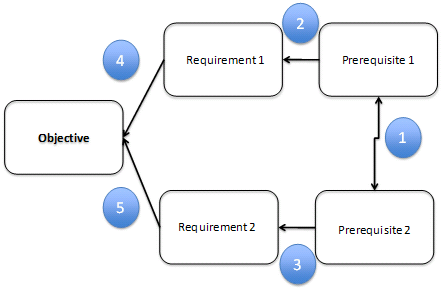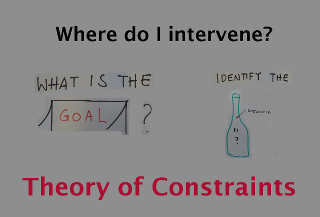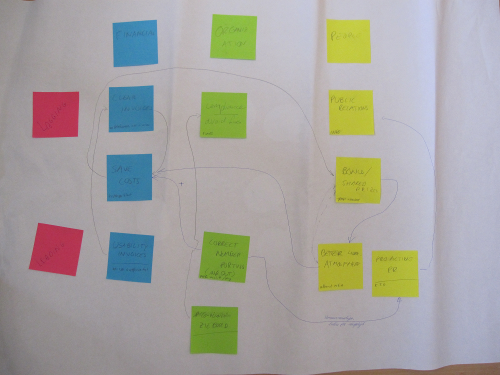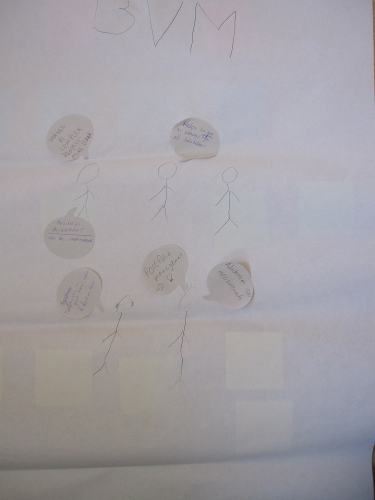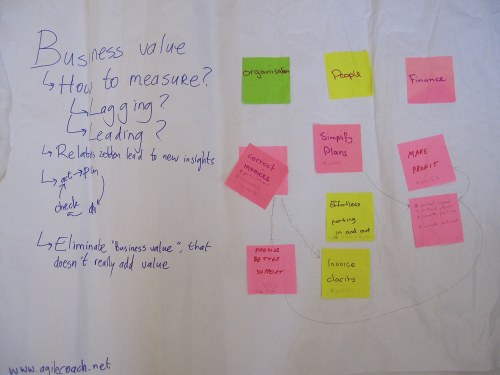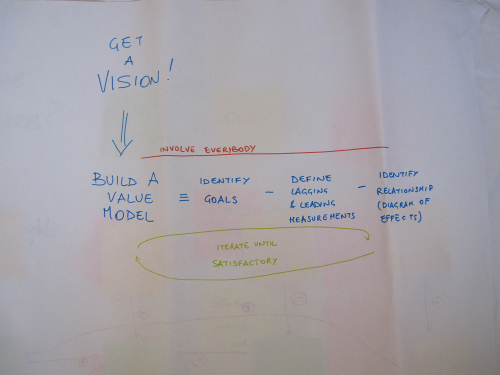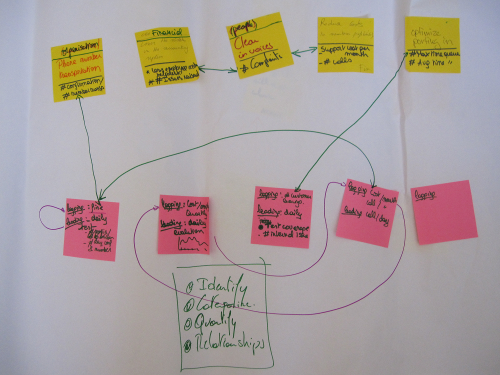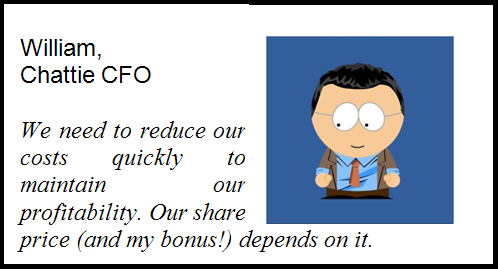Résoudre les conflits sans compromis
La semaine passée j’ai présenté comment résoudre les conflits avec le “Diagramme de Résolution des Conflits” à la Conférence Agile Paris. La présentation est disponible ci-dessous. Plus d’informations sont disponibles sur le site Agile Coach.
Conflict Resolution Diagram Tutorial – French
A la fin de la présentation il y a deux questions pour voir si vous avez compris la leçon:
- Est-ce qu’il est possible de former un gouvernement belge avec cet outil? Si oui, pourquoi? Si non, pourquoi pas?
- Est-ce que vous pouvez résoudre ce conflit récurrent entre Product Manager et Développeurs:
- Le Product Manager a besoin d’estimations et de planning très détaillé et fiable pour publier une roadmap qui dit quand quel fonctionnalité sera livrée quand ET livrer ces fonctionnalités comme promis
- Les clients, qui souvent sont des grandes entreprises avec plusieures filiales dans les monde et beaucoup d’utilisateurs, ont besoin de cette roadmap pour planifier quand ils vont implémenter une nouvelle version
- Les Développeurs sont “passés au Kanban”: ils ont arrêté de faire des estimations ou des plans. Cela prenait beaucoup de temps et ce n’était jamais correct.
- Les Développeurs “éliminent le gachis” parce qu’ils doivent aller de plus en plus vite pour satisfaire les requêtes d’un nombre de clients qui toujours croissant.
- Tout le monde veut livrer les fonctionnalités au client au moment où les clients attendent ces fonctionnalités.
Vos réponses et questions dans les commentaires…
D’abord essayez de clarifier le conflit.
Puis, découvrez les suppositions derrière chaque étape du raisonnement.
Translation
I presented an interactive tutorial on how to apply the “Conflict Resolution Diagram” at the French Agile conference in Paris. You can see the English version of the presentation at the Agile Coach site.
At the end of the French version of the presentation there are two tests to see if participants understood the tool:
- Can you use this tool to form a Belgian Governement. If yes, why? If not, why not?
- Can you resolve this common conflict between Product Manager and Developers:
- The Product Manager needs detailed estimates and accurate planning because she has to create a long-term roadmap which spells out which features will be delivered when AND deliver those features when promised to keep customers’ trust
- Customers, who are typically large multi-site companies with many users of the product, need the roadmap because they need to plan when they will roll out which version throughout the enterprise
- Developers have “gone Kanban” and have stopped estimating and planning because the estimates took too much time and were incorrect anyway
- Developers stopped estimating and planning to decrease waste so that they can keep up with the increased demand for features from the increasing user base
- The whole company wants to deliver the features customers ask for when customers expect them.
Answers on a postcard or a comment…
First, try to clarify the conflict.
Then try to find the assumptions behind each step of the reasoning.
